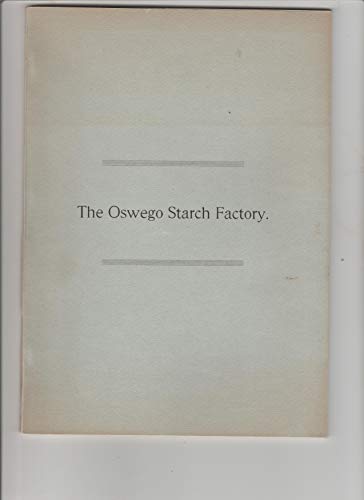Background
Thomas Kingsford was born on September 29, 1799 in Wickham, Kent County, England, the son of George and Mary (Love) Kingsford.



(31 page booklet from the Kingsford family business in Osw...)
31 page booklet from the Kingsford family business in Oswego.Weight: 7 oz approximate, 7 x 10 x .25
https://www.amazon.com/OSWEGO-STARCH-FACTORY-Thomas-Kingsford/dp/B00DQZFCRW?SubscriptionId=AKIAJRRWTH346WSPOAFQ&tag=prabook-20&linkCode=sp1&camp=2025&creative=165953&creativeASIN=B00DQZFCRW
Thomas Kingsford was born on September 29, 1799 in Wickham, Kent County, England, the son of George and Mary (Love) Kingsford.
Kingsford attended school until he was seventeen years old when the death of his father compelled him to find employment to help support his widowed mother.
For five years Kingsford was a baker in London. He then found employment in a chemical plant where he developed a marked ability for chemical research and acquired a practical working knowledge of chemistry. Ill health, however, compelled him to give up this occupation after a few years and he again turned baker, working at his trade in various parts of England. At Kensington in addition to his baking business he maintained a general store. About 1830, when financial reverses ruined his business, he went to Headcorn in Kent County and with the assistance of his wife started a school.
The following year he determined to seek his fortune in America, and leaving his wife in charge of the school, he emigrated to New York City, landing on December 12, 1831. He was able to send for his family in 1833. After working at his trade for a few months he found employment in the starch factory of William Colgate & Company at Harsimus, Bergen County, New Jersey, then the largest firm engaged in the manufacture of this commodity, and by his energy and resourcefulness soon rose to be superintendent. Starch was then made from wheat and there were many objectionable features in both the methods of manufacture and in the product.
As early as 1833 Kingsford began to study means of improving the methods in use and became convinced that in ripe Indian corn lay a source of obtaining starch. For seven or eight years he continued this study without any encouragement from his employers and followed it in 1841 by a series of experiments. After many discouraging trials, upon determining that the starch in corn could not be extracted as in wheat, Kingsford accidentally placed some lime-treated corn in a receptacle containing corn treated with lye which a few days later yielded a thoroughly separated starch. Almost a year had transpired before this successful accident occurred, and very quickly thereafter, in 1842, Kingsford perfected his process and produced a quantity of marketable starch. A business engagement quickly followed between Kingsford and William Colgate & Company whereby Kingsford was to superintend all of the operations, devise the manufacturing machinery, and at the same time retain knowledge of the process for himself.
Four years later, in 1846, Kingsford organized his own company with his son Thomson, erected a small factory at Bergen, New Jersey, and there began the manufacture of Kingsford starch. Two years later he founded the Oswego Starch Factory and erected a large plant at Oswego, New York, where he carried on a successful business until his death. In 1850, after a series of experiments, Kingsford successfully produced cornstarch for food purposes, which quickly came into public favor. Aside from his manufacturing interests, he was active in banking circles in Oswego.
(31 page booklet from the Kingsford family business in Osw...)
Kingsford's first wife, Ann Thomson, whom he married in 1818, died in 1834, and in 1839 he married Mrs. Elizabeth Austen. At the time of his death his sole survivor was his son Thomson.
